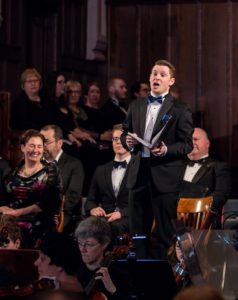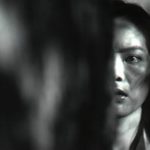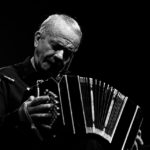Heather Schmidt’s unique dual talents as a pianist and composer have garnered praise from the press, describing her as “a brilliant virtuoso pianist”, “poised and utterly musical”, “a great artist”, and “as much a pianist in the professional sense as she is a composer”.
Her acclaim in both her native country of Canada and on the international musical scene comes from her many successes as a virtuoso soloist and composer including performances, broadcasts, commissions and awards in Canada, the United States, Russia, Finland, Iceland, France, Germany, Switzerland, Poland, the Czech Republic, England, Cyprus, Mexico, Brazil, and the British West Indies.
Heather began studies in piano and composition at the age of 4, and composition at the age of 5. She pursued double majors in piano performance and composition throughout her musical education. She studied at Juilliard in New York City and at Indiana University, where, at age 21, she became the youngest student to receive a Doctor of Music degree.
Since these formative years she has received numerous accolades, including a nomination for the prestigious “Juno” award, the Canadian equivalent of the “Grammy”, in the category of “Best Classical Composition.” As a virtuoso soloist, she received First Place in the Eckhardt-Gramatté National Music Competition, and First Place, the Audience Choice Award, and the Maestro’s Choice Millennium Foundation Award at the Canadian Concerto Competition. Composition awards include three consecutive Broadcast Music Inc. (BMI) Awards, SOCAN Composer Awards, the Zwilich Prize in the International League of Women Composers Competition, the Juilliard Composers Competition, and the Dean’s Composition Prize at Indiana University.
As a virtuoso pianist, Heather excels in both traditional and contemporary repertoire, offering audiences her unique perspective on the standard repertoire of the past, her own works, and the works of other living composers. In addition to her solo recitals, she regularly performs as a guest soloist with orchestras, including exciting performances of her own six piano concertos. She is also a sensitive and much in demand chamber musician, especially well known for her long-time collaboration with Canadian cellist Shauna Rolston.
Heather’s performances and performances of her compositions have not been restricted to concert halls, and also include numerous television and recordings appearances. The first televised performance occurred when she was only 8 years of age. More recently, she appeared on the BRAVO Classical Now Series. Her most recent recordings include: Nebula, a CD of her piano performances of her own solo piano compositions on CMC Centrediscs; a CD of solo piano works by Fanny Mendelssohn-Hensel for the NAXOS label; “Shimmer”, a solo piano CD of works by various composers from Baroque through contemporary eras; and “Icicles of Fire”, a CD of works she composed and performs with cellist Shauna Rolston.
Heather’s extensive catalogue of concert music compositions includes works for solo instruments, chamber ensembles, orchestras as well as for vocal/choral genres. She has received commissions from prestigious sources such as the CBC (Canadian Broadcasting Corporation), Canada Council for the Arts, the Alberta Foundation, WDR (Westdeutsches Rundfunk in Germany), the Elaine Kaufman Cultural Center, the New York State Council for the Arts, the Dallas Symphony Orchestra, and the Harvard Musical Association.
At age 19, she was asked to write the required competition work for the 1995 Banff International String Quartet Competition. Since then this work that has been performed throughout North America and Europe. Ms. Schmidt has also composed imposed test pieces for other major competitions, including the CBC Young Performer’s Competition (Chaconne, 1999), the Ester Honens International Piano Competition (Nebula, 2006), and the Eckhardt-Gramatté National Piano Competition (Night Rainbow, 2007). She has held numerous composer residencies, including a long-term residency with the Hamilton Philharmonic Orchestra.
As a composer of film, television and video games, Heather’s recent projects include Empire of the Sharks for SyFy channel, Jurassic School for Netflix, Break-Up Nightmare for Lifetime TV, Elvis Lives for AXS TV, the independent comedy feature How to Get Rid of a Body and Still Be Friends, and the video game Homesick.
In addition to being the composer, Heather also wrote and directed two short films – Midnight Violin, for BRAVO TV in Canada funded by BravoFACT, and The Uninvited Ghost. Heather is also the creator and co-executive producer of Animal Planet’s 2016 TV series Life at Vet U.
Heather’s creative interests have recently expanded to writing. In August 2018, she signed with literary manager Jeff Portnoy of Bellevue Productions as a screenwriter for film and TV. She also has aspirations as a writer of picture books and Young Adult novels.
Born and raised in Calgary, Alberta, Heather holds dual Canadian and American citizenship. She currently lives in Los Angeles with her husband and her pets.
A huge animal lover, she has many rescues — three dogs, three cats, a pigeon and a horse (plus a few fish!). In 2016, she launched a nonprofit 501c3 dog rescue called Hollywood Huskies, which in its first two years has rescued over 120 dogs. In January 2018, she opened a sister not-for-profit husky rescue in her hometown of Calgary called Halo Husky Haven.
We’re thrilled to feature Heather’s Lunar Reflections as part of our October 19th concert.










